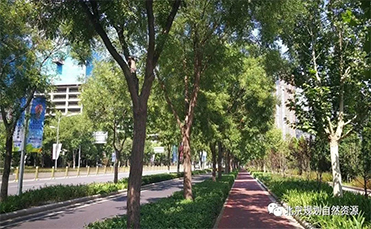


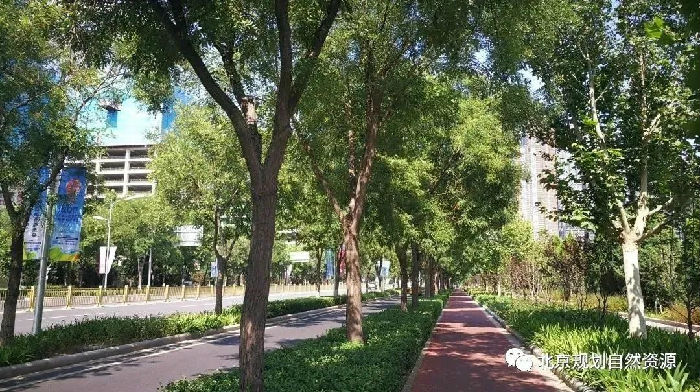
Beijing Slow Traffic System Plan (STSP) was published for public consultation on September 2nd, 2021. This plan aims to promote the development of a slow traffic system, establish the green transportation mode and make Beijing a pedestrian and bicycle friendly city.
1.Establish slow traffic system to battle‘big city disease’
After decades of urban development, the central city of Beijing has formed a hierarchical street structure, including grid streets, circular streets and radial streets. There were about 45% of Beijing’s residents taking bicycles to travel in the 1980s,so many streets have sidewalks and bikeways.
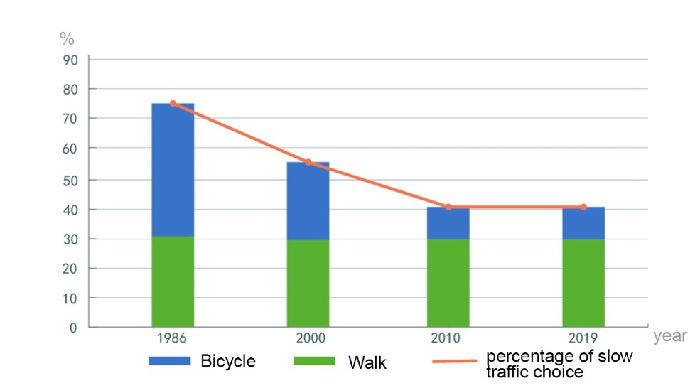
The change of slow traffic choice from 1986 to 2019
However, with the quick spread of automobiles, the slow traffic space in Beijing faced many challenges. For instance, many cars parked on bikeways or sidewalks; the streets became too wide for people to cross; the environmental quality of slow traffic space became worse; risky driving behaviors threatened people’s safety. Therefore, the master plan of Beijing focused on establishing a pedestrian and bicycle friendly transportation system.
The STSP aims to establish a slow traffic system in Beijing that is safe and well-connected, accessible to everywhere, good to health, and all-ages friendly. By 2025, Beijing aims to publish systematic planning standards and guidelines to manage slow traffic systems, solve the typical problems and improve the attraction of slow traffics. By 2035, Beijing will establish a green transportation mode that is combined with public transits and slow traffics. The STSP sets up 8 planning metrics in aspects of transit choice, bicycle usage, road right and environmental quality.

The planning metrics of slow traffic system
2.The planned system of slow traffics
In the STSP, Beijing’s slow traffic system is formed by four sections. The first section is to build well-connected networks. The STSP plans a slow traffic system of one main network, two sub-networks and four featured networks. The one main network refers to urban streets network; the two sub-networks refer to road connections to other cities and neighborhood streets; the four featured networks are greenways, waterfront lanes, historical culture travel lines and dedicated slow traffic lines.

The left figure is the slow traffic network in Beijing and the right figure is an example of slow traffic lines in the neighborhood
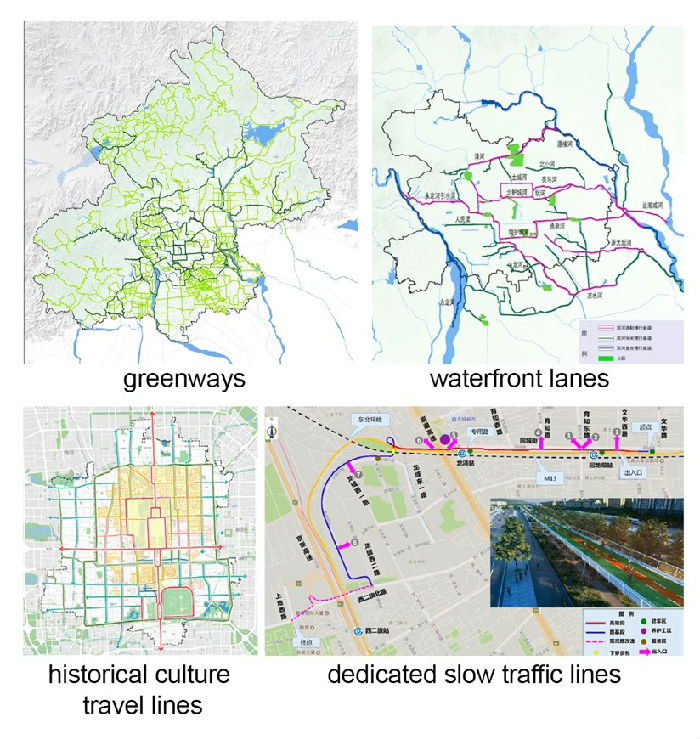
The four featured networks of Beijing slow traffic system
The second section is to make the public services and facilities accessible within a 15-minute walk. Efforts will focus on the surrounding area of the school, hospital and railway station. The third section is to build slow traffic space together with the featured urban space. The STSP introduces seven urban functional zones and suggests the design guidelines of slow traffic system in each zone. The last section is to set up the standards for slow traffic system planning and construction. Based on the published design code and standard, the local government of Beijing will formulate more guidelines to improve slow traffic space planning and design.
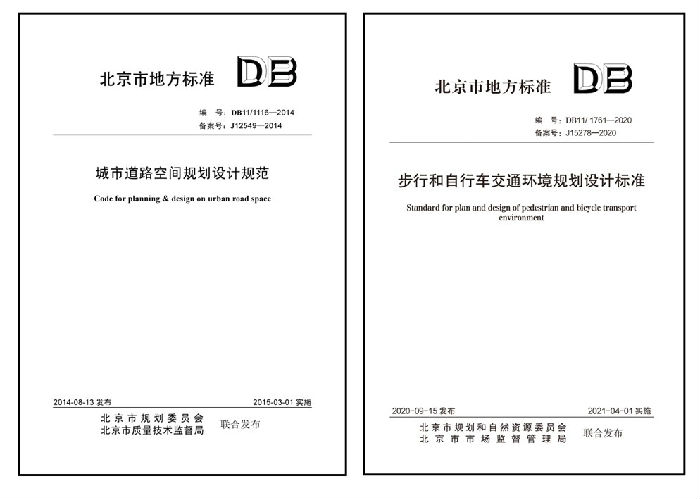
The two published local guidelines-code for planning & design on urban road space and standard for plan and design of pedestrian and bicycle transport environment
3.Implementation strategies
This document also includes four strategies to advance the implementation of slow traffic system plan. Protecting the road right of pedestrian and bicycle is the first strategy. For instance, reduce the car park lots that were delineated in bicycle ways; carefully locate the infrastructure facilities to reduce their negative impacts on pedestrians; change the layout of street near bus station; guide pedestrian and bicycle behaviors by administrative regulations.

The left photo shows car park lots on bicycle way. The right photo shows an example of infrastructure facilities on street sidewalk
The second strategy focuses on the shortages of current slow traffic system. More efforts should be done to provide a safe and convenient walking environment, such as narrow the street wide and build safety islands at a street cross. The detailed street design and smart traffic control system can improve the traffic flow, such as provide diagonal crosswalks and reduce the turning radius.

The left figure shows an example of a diagonal crosswalk. The right figure presents the bikeways at a street cross.
The third strategy is improving the environmental quality of slow traffic space. Efforts, such as increase vegetation greening, renew the ground pavement and build slow traffic space together with the building setback space and green space, can be done to provide better slow traffic space.
The fourth strategy is advertising slow traffic broadly to encourage more people to walk or ride bicycles. The STSP provide some examples on publicity,such as organize car-free day and expose risky traffic behaviors.
The full version of Beijing Slow Traffic System Plan (2020-2035):
<http://yewu.ghzrzyw.beijing.gov.cn/zkdncmsUploadFile/gwzykfile/ueditor/20210902/1433326380787929089.pdf>
Source: <https://mp.weixin.qq.com/s/ky86kow9GZkJLXv_Qn_lwA>
Photos from Beijing Slow Traffic System Plan (2020-2035)
Edited and translated by Jia Mengyuan